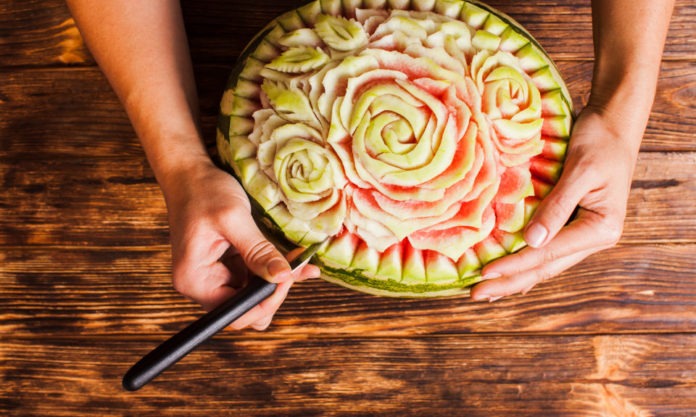Jiangsu cuisine is one of China’s eight main cuisines. It is known for its mild flavour and fresh ingredients. Due to its unique geographical advantage, a wide array of crops can grow in Jiangsu.
Although commonly known as the land of fish and rice, fruits and vegetables are also abundant in Jiangsu, and they have been part of Jiangsu’s cultural history for a long time.
Jiangsu’s most famous dishes include salty duck, sweet and sour fish and Yangzhou Fried Rice. However, the dishes that are served without the intent of eating may be the most impressive parts of Jiangsu cuisine (苏菜; Sucai),
Food in Jiangsu is not only an experience for your taste buds, it is something to be appreciated in more ways than one. Afterall, Jiangsu is home to the UESCO Creative City of Gastronomy; Yangzhou.
That’s why Jiangsu food does not just smell and taste delicious, but is served in a way that shows off the vibrant colours of local ingredients. It is also popular for restaurants to arrange the food in dishes in an appealing manner on the plate.
Social media is flooded with posts and accounts dedicated to creating art out of food. And food carving is one of the most popular forms of food art today.
The ancient practice of carving beautiful imagery out of food has continued in modern times, and because of the abundance of tools and techniques, carvings have grown in detail and complexity, demonstrating the talent and dedication of chefs to this craft.
Though the precise origins of food carving are unknown (the practice is carried out throughout different places in Asia), its beginnings in China can be traced back to the Sui and Tang Dynasties.
In these eras, it was common to carve eggs and fat to decorate rice which was to be consumed.
The practice evolved as time went on, and during the Song Dynasty, carved food became common at banquets and celebrations. Bamboo shoots, ginger and watermelon were the common foods used for these carvings, which were often modelled after birds, fish, animals and pavilions. In Yangzhou in particular, watermelons were carved into lanterns.
Food carvings were also signs of wealth and prosperity. Today, traditional examples that mirror the beautiful scenery and culture of ancient China are highly valued and appreciated.
Nowadays, imagination is the source of inspiration and chefs are able to carve any design they desire.
While food carving may seem like a highly technical art form, it also requires a high level of knowledge about the fruits and vegetables to be carved.
Experienced chefs know what kind of vegetables are best for making what kinds of shapes, or what kind of vegetables will be best suited for the design the chef wants to make.
This requires chefs to not only think about the texture of the fruit or vegetable, but also the ways in which the peel or the skin of the vegetable or fruit can be used as part of the carving.
Competitions have taken place across our province to celebrate this cultural practice. Competitors serve art pieces rather than dishes.
The stunning pieces that are created demonstrate the intricate details of food carving and the dedication that the practice requires.
Food carving has shaped Jiangsu culinary culture in more ways than one. Since ancient China, carving has also been the way to demonstrate innovation and creativity through food.
It is also, however, a way of encouraging great knowledge about the crops that grow in Jiangsu, in order to use them to their full potential.
More than this however, food carving is a part of Jiangsu history that continues to grow and evolve with time.









